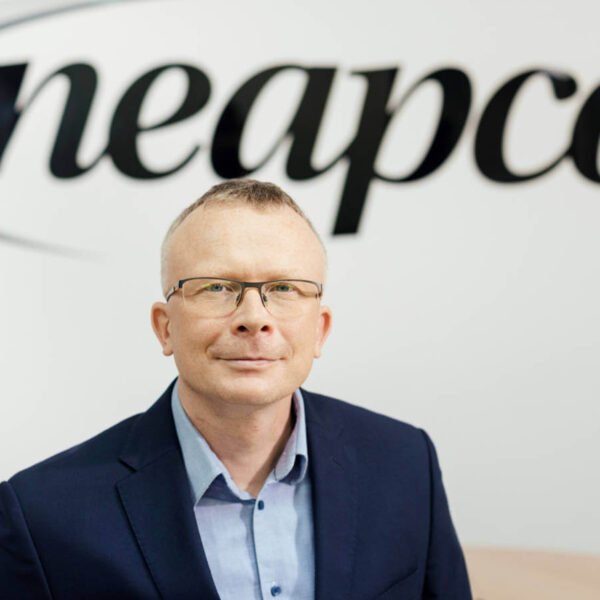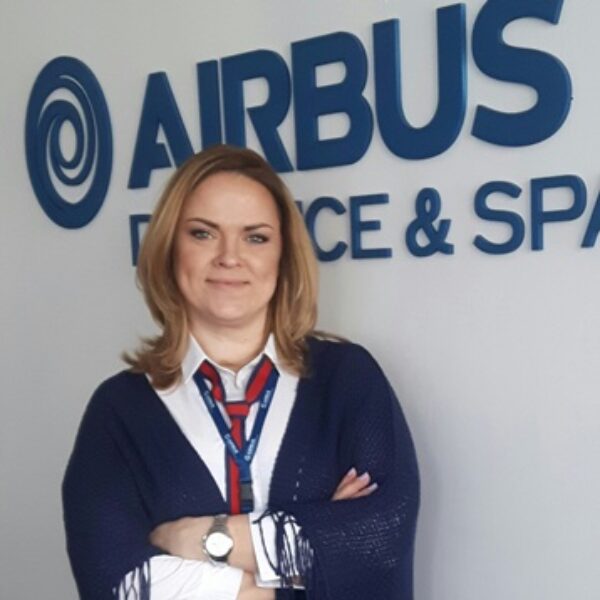
High business requirements, new Information Technologies, more efficient servers – are all associated with increasing investment in IT. Is it possible to make IT infrastructure more efficient while reducing its maintenance costs? – we put question to Tomasz Wawrzonek, IT Manager in BCC.
What do you think is currently considered an IT department’s priority?
Increasing IT’s responsiveness to business needs and ensuring the required availability and efficiency of IT systems to meet business needs. Our goal is to make applications available to a target group of users, regardless of whether the user is working locally or remotely, to ensure that using the IT system is comfortable. The functionality should support the achievement of business goals.
Business development means an increasing number of IT solution users (and the number of computers) along with a more extensive usage of various applications has resulted in a growing infrastructure needing to be administered. The central system environment is also expanding and additional hardware is needed: database servers, message exchange servers (EDI), servers with ERP, CRM and other systems. In many companies, making some of the corporate IT resources available to customers and counterparties is common.
As a result, we quickly become dependent on IT systems and new technologies, which have to meet the escalating availability and efficiency requirements connected with the business and market needs.
Higher availability, efficiency and safety, new technologies… It all sounds expensive.
That is a very common way of thinking about it and, at first glance, it seems that the costs of IT development and maintenance rise with the escalation in requirements, especially in the scope of business continuity. This, however, does not need to be true, when the budgets have been agreed upon. Of course, it is not possible to avoid costs connected with: workstation maintenance, servers, networks, mass storage memory (including the costs of hardware and the licenses), and the costs of server room infrastructure, connections, and maintaining the appropriate competency of employees.
The key to success is choosing the right technological and procedural solutions. As a result, we can get better and better without increasing costs. There are various ways of managing the infrastructure. Let’s take two examples of methods that bring measurable effects.
First, outsourcing – from competence outsourcing (system administration services) to infrastructure hosting. BCC offers a wide range of IT outsourcing services, from training courses and remote support for application administrators to hosting and systems administration working in our data center. Our offer is tailored to the customer’s needs and expectations.
Cloud computing is another matter, whose assumptions we follow to keep the availability and efficiency of IT systems at a high level while meeting safety requirements and avoiding excessive costs. It’s a good idea to use virtualization technologies, on which cloud computing is based, and systems that support an automatic infrastructure monitoring, costs settlement and intelligent emergency response.
Virtualization, IT infrastructure safety and possible ways to increase the availability of IT systems have been addressed in many articles published in Better Business. What does it have to do with cloud computing?
Many companies have virtualized their systems, which has resulted in a more efficient utilisation of the infrastructure, facilitating reductions in IT costs. The companies have also moved to an “Infrastructure as a Service” (IaaS) model. If the Services are provided at a required level and the responsibilities are clearly defined, it is called an “IT as a Service” (ITaaS) model. To sum up, if a company has virtualized its resources, certain service provision standards are met and the user access has been properly defined with costs being correctly assigned, it is called cloud computing, or more precisely, a private cloud.
How much can be saved owing to virtualization?
It, obviously, depends on the systems which the customer wants to virtualize and the way they are using their current hardware platform. The costs of providing sufficient computing power can be reduced by several dozen percent. To understand this, it’s enough to look at the technological progress in computing power and compare the current processors to those manufactured several years ago. Their computing power is greater by several orders of magnitude.
That is why virtualization enables a company to get a big return on its investment. In specific cases, a return on the outlay is possible only after a few months. At our customers’ request we can estimate the TCO of virtualization projects.
It's worth noting that virtualization offers alternative solutions in the scope of selected functionalities, for example creating high availability systems. The advantage of virtualization can be demonstrated in the case of systems, for which the manufacturer did not enable the configuration of high availability at the application level; owing to virtualization, it may be created at the level of virtual IT infrastructure. It also enables reducing the costs of server administration and the response times in the case of a disruption in system operation continuity.
What does 'high availability system’ really mean?
High availability (HA) is ensuring that the IT system runs continuously, regardless of any malfunction of the infrastructure elements, on which the solution runs, which means no single points of failure (SPOF).
Increasing an IT system’s criticality results in higher business requirements related to the continuity of the IT system’s operation. The manager responsible for the system availability has to think about how to deal with malfunctions – provide appropriate tools to increase the availability of IT systems, or maybe hire new administrators and work on a 24/7 basis.
Of course, from the IT manager's point of view, preventing malfunctions is more important than removing them.
This issue has many aspects. For example, one of the most common reasons for IT system downtime are problems with the power supply. What is the best way to ensure proper power supply? Is it enough to implement an emergency system (UPS) or is a generator necessary? Other important factors include striking a balance between the implementation of more and more advanced technological solutions and introducing appropriate procedures, such as change management, reacting in critical situations or procedures which ensure operation continuity.
Preventing and removing malfunctions must be accompanied by another important activity – the on-going monitoring of critical parameters, that must be achieved at all times to avoid a malfunction. Today, it's vital to prevent problems; not only react to them. We have to implement an appropriate monitoring system that will inform us about any potential problems or alert us that when we are reaching pre-defined thresholds – even such basic values as, for example, the temperature in the server room.
IT security, procedures and tools are not enough to eliminate malfunctions. Creating a high availability system is requires building an IT system environment, in which – as mentioned above – a failure of one element of the infrastructure does not result in the unavailability of the entire system.
All those elements – infrastructure, virtualization, proper network security and monitoring tools – are complementary and function as parts of the whole.
And from a practical pint of view – what must be done to ensure high availability of IT systems?
First off all, single points of failure must be eliminated and manual or automatic (depending on the decision taken) switching between infrastructure elements must be provided. As a result, a malfunction of a single infrastructure element is not visible for the end user or the system downtime has been reduced to a minimum. The redundancy of such structural elements as servers, the network connection and the applications of virtualization strategies enable the modelling of an automatic reconfiguration in the case of a malfunction.
A high availability solution can be built based on many different hardware/software solutions, for example, VMware for Intel servers (Windows, Linux) or logical partitions for IBM POWER (UNIX) servers IBM.
In the BCC Outsourcing Centre we use virtualization technology based on VMware software. This enable us to implement new systems or services in the IT infrastructure.
There are many monitoring systems available on the market. From large systems offered by the biggest IT companies, to free, open-source systems, to systems dedicated to specific applications or solutions, for example, SAP Solution Manager for the SAP systems.
In the scope of building the safety procedures and ensuring operation continuity, we rely on the good practices of ITIL. Implementation of these practices in BCC is controlled by a dedicated IT Security team. The team implements and audits this type of solution at our customers’ premises.
What about companies using SAP? Does building high availability architecture for those systems entail any additional challenges?
There is no substantial difference between the environment of SAP systems and other IT systems. We should only remember that to ensure that there is sufficient mass storage performance, especially as concerns disk space – it’s vital for ensuring the appropriate performance of the SAP systems.
The competency and experience of the administrators is always a big challenge, as it is necessary to ensure the administration of a high availability environment for SAP in a way that guarantees its proper operation. There are lots of available technologies and configurations. As part of the BCC service provision, we have configured several dozens of high availability installations based on deferent technologies, for example: VMware, Microsoft Cluster, IBM HACMP, HP ServiceGuard. Our strength is in our knowledge of the technologies and our experience in different configuration variants.




















